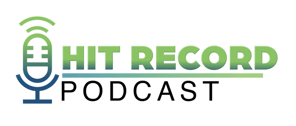Episode 36 - How to Use Digital Ads During Times of Rising Interest Rates

Don't Miss An Episode, Subscribe Now

As interest rates rise, the demand for mortgage products is going down. Naturally that's going to drive up the costs of conversions around mortgage products when it comes to pay-per-click ads. The FI GROW team discusses how to navigate:
- Less people searching for mortgages
- Rise of cost for these PPC campaigns
- Filtering past low quality leads
Transcription:
If you're looking for best practices for your bank or credit union, join us while we talk all things sales, marketing, and strategy for financial institutions. Let's make it happen with FI GROW Solutions.
Meredith Olmstead:
Hi, there. I am Meredith Olmsted, CEO and founder of FI GROW Solutions, and we are a digital marketing and sales agency. We work exclusively with banks and credit unions. And I am here with our digital ads manager, Ida Burr, and Ida say hi.
Ida Burr:
Hi, everyone.
Meredith Olmstead:
And Ida and I were just having a really great conversation about the rising interest rates right now in our market, which I'm sure all of you all are aware of, and how those interest rates are impacting what she does for clients, which is run lots of different kinds of digital ads. Mostly we were talking about paper click ads, because those are the ones that we really like to see driving conversions. And so we were talking about what's going on with the interest rates and how that's impacting all these different kinds of ads. And I was like, "Hold on. Let's push record. This sounds like a conversation we should be having and sharing with everybody out there in the marketplace."
So I just wanted to dive in really quickly and review some of what we were talking about. Because basically what we're seeing, of course, is that as interest rates are going up, the demand for mortgage products is going down. And so, of course, naturally that's going to drive up the costs of conversions around mortgage products. So Ida, what are you seeing with first mortgage ads or with HELOC ads? How are the interest rates really impacting what you're doing or what you're seeing for clients?
Ida Burr:
Yeah, so pretty much what's going on is a lot less people are searching, and I think it has to do with the interest rates and the fact that the housing market is finally slowing down after the crazy past year or so that we've been in. The costs are starting to go up. We're starting to see more low quality leads coming through just because the pool of possible people that are seeing these ads is getting smaller and smaller. So it's been interesting trying to navigate this new dynamic that it changed pretty much it seems like overnight.
Meredith Olmstead:
Yeah. The fixed rate market is really tanking in terms of mortgage products. I know that we saw a slight increase in HELOC, our home equity loan applications. A lot of people have variable rate options for those, and so people were for a while still searching for some of that. Are those ads also being impacted?
Ida Burr:
Yeah, the HELOC ads I feel like are getting even more expensive than the mortgage ads. And maybe it's because for the most part they are variable rate that a lot of bigger banks and stuff are starting to be interested in that with rates going up and everything. So definitely I would say the HELOC is probably being hit a little harder with these rate changes.
Meredith Olmstead:
So basically what we have been trying to do for our clients, because nobody wants to just exit the mortgage product market. You've got to still have those and offer those products. People are still in need of them. But what we've been trying to do with clients is really try to figure out how to maximize the quality of the more expensive clicks that you are paying for. Because you want to still be driving traffic to some of those products and services, but you really want to make sure that that traffic is well qualified, actually interested. They're people. They're not like robots who are trying to game the system. And so we've done a few different things and been testing a few things with clients to make sure that the quality of leads coming in, even if they're a little bit more expensive, they're better. So let's talk about that, Ida. What's the first thing that you would say people should do to maximize lead quality?
Ida Burr:
Yeah. So the first thing I like to suggest to clients, depending on their online application process, if it is fairly easy for people to apply for these types of products without actually going to a branch, I think your current location targeting is fine. But if you are a little limited and they probably will have to come to a branch a few times, I would definitely shrink the area that you are targeting to make sure that it's very close to branches so you don't end up getting that drop off when they realize, "Oh, I don't have time to drive 30 minutes to the branch." So that's the first thing I would do is take a look at that and see if you can shrink that area a little bit down.
Also, I've been playing with the audience targeting in terms of known demographics. So I think you could target right now based on gender, income, and age. With these financial service type products, you can't target gender. And I feel like targeting age and income is a double ... It shrinks it down way too much. But what I've been doing is unchecking the unknown age. So Google will stop showing these ads to people that they don't know an age for. So this filters out those people who it might be fraudulent activity, it might be just bots or very low quality traffic that ... Google knows everything about you. If Google doesn't know how old you are, at least like a range-
Meredith Olmstead:
You're not a person. Right.
Ida Burr:
... you're probably not real.
Meredith Olmstead:
Yeah. So it's a little creepy. It's a little creepy. But for our purposes it can be effective in terms of it's not about excluding real people who are out there searching. It's about excluding people who are out there trying to game the system, use a robot to find an online application to try to do some kind of fraudulent activity, those kind of things.
Ida Burr:
Yeah. And I always, I'll just exclude unknown. So I don't try to go after people under 50 or do anything like that. I just say if it's unknown, let's not show the ad.
Meredith Olmstead:
So I know then sometimes there may be a lot of rate shoppers out there. That's definitely with this rising interest rate, there are going to be a lot of people out there. If your institution does have a lower rate, sometimes a smaller institution might be able to offer a lower rate for a little bit longer. Would you recommend putting that rate in the ad itself on Google or in a paper click ad?
Ida Burr:
I mean, that's a tough one because the rate could be a very good selling point, but at the same time, the rates are changing so frequently. The more you edit the ad, because if you have the actual rate in the ad, you're going to have to edit it every time the rate changes. So that gets a little tricky. You don't want to keep editing the ad and putting it through the learning phase. That will hinder your results.
Meredith Olmstead:
Gotcha. So if you feel like you have a good solid rate that's going to be in place for four to six weeks, it's probably okay to put it in the ad. But if you feel like your rates may be shifting more often than that and it's not really that competitive, it might be best to leave out.
Ida Burr:
Yeah. And I mean, you can even have two ads running in the same campaign and have one with the rate and one without a rate in it. And that way if the rates change, you could just pause the one that has the rate and let it run for a while. That way if you keep getting different rate changes, you're not editing the ad. You could just turn off, switch on and off the campaign.
Meredith Olmstead:
Oh, that's a good tip. The last thing too that we always try to remind people about is in order to maximize the quality of your leads is make sure you don't lose them when they land on your landing page or your website page on your website, right? Because so often people are driving traffic to pages or places on their websites that don't have a clear conversion on them. So you need to make sure that whatever the ask is, whatever success looks like on that landing page is super clear, super easy. Ask for three or four pieces of qualifying information, capture that lead, and then send them to the longer application. But you want to grab some contact information from that lead as quickly as possible so that you can have a salesperson follow up with them. And that's definitely something that we see a lot of times where we will lose people when they land on a busy website page that has too many options on it.
Ida Burr:
Yeah. And I mean, another thing I tell our clients, too, is if it's getting too expensive and if it's not really worth it anymore, don't be afraid to shift budget around. You can leave them running, but take some of the budget, put it somewhere else where it's more efficient. People will find you if you have good rates or if they're shopping around. But definitely don't be afraid to shift budget around, too.
Meredith Olmstead:
Yeah, yeah. We've seen people shifting to some other consumer products or consumer loans. We've also seen people having a lot of luck with just bank near me, credit union near me, best bank, best checking account, that kind of language. People search all the time, best fill in the blank, so those are good search language options to consider when people are just looking for new institutions. Awesome.
All right. Well, thank you so much, Ida. I think this is super useful for people especially and very, very relevant in our current market. Thanks for tuning in, you guys. And if you want to know more, please visit our website. We have lots of other episodes and blogs about best practice for marketing for banks and credit unions. So in the meantime, let's just all get out there and make it happen.








Blog comments